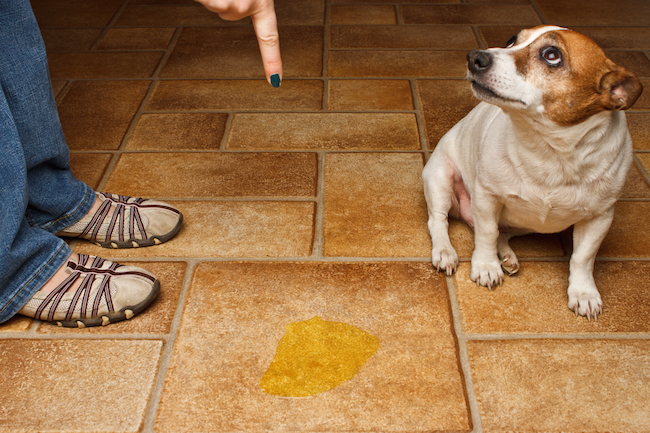
Accidents can happen to anyone. Some dogs, particularly younger pups, or those that were adopted and may never have been properly potty-trained, have a tendency to eliminate indoors. However, there is a difference between a puppy leaving a mess and a senior dog losing bladder control. Learn to identify the distinctions between accidents and the physical condition of incontinence, and find out what may be causing this behavior in your pet.
What is Incontinence?
Urinary incontinence is the lack of ability to control the muscles which hold urine in the bladder. Unfortunately, this condition can be a common struggle for older pets, just as it often occurs among elderly people. As canines age, muscle control becomes challenging, and an excess of excitement and or fear can result in an unexpected puddle on the floor. Most pets quickly learn that there is a proper place to eliminate (cats rely on litterboxes, and canines nudge your leg for a walk, or simply slip out of the doggy door to find their favorite patch of grass!). However, when a trained cat or dog begins to change their pattern of urinating in the correct place, the pet owner may need to consider that their animal has a physical problem.
What Causes Incontinence?
There are several factors which cause incontinence, but the most common reason is aging. Senior animals often begin to lose control over their urethral muscles, making it difficult to hold in urine. Female dogs lose estrogen as they age, causing a weakening of the urethral muscles in what is generally referred to as “spay incontinence.” Such dogs might urinate frequently in their sleep, or while they are going about their regular routine at home.
Another reason a pet might have incontinence is if he is suffering from serious health conditions. A lack of bladder control may only be a symptom of a worse problem such as a bladder infection, neurological problem, seizure, urinary stone, prostate issue, spinal cord disease, congenital hydrocephalus, diabetes, or a negative response to certain medications. Additionally, incontinence can result from the over-production of urine which often accompanies kidney disease.
Urinating indoors might also indicate a hormonal imbalance, specific behavior concerns such as extreme anxiety, stress, or PTSD. Whatever the reason a dog or cat might have incontinence, here are some ways the disorder can be treated.

